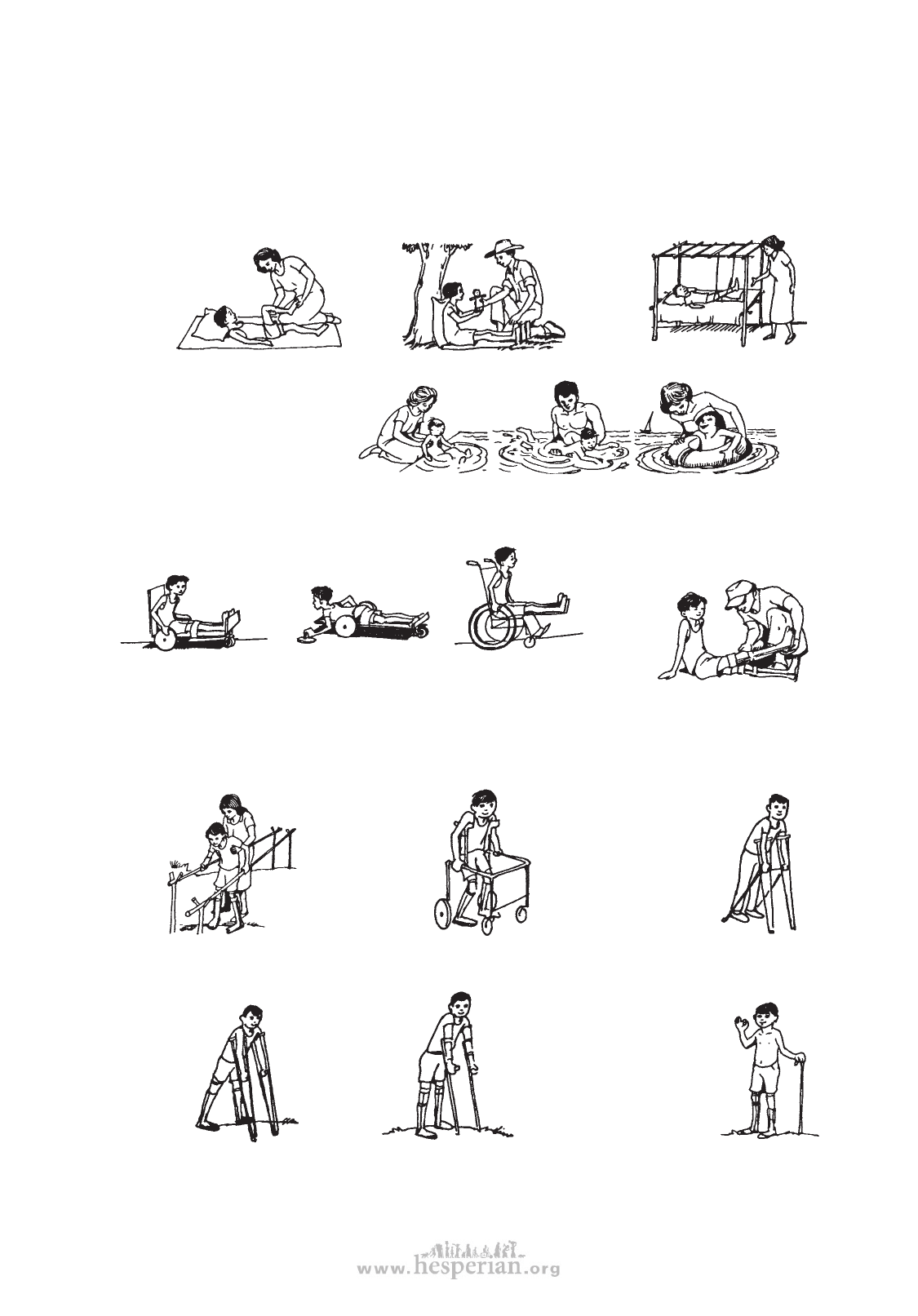
PROGRESS OF A CHILD WITH POLIO:
THE CHANGING NEEDS FOR AIDS AND ASSISTANCE
1. exercises to keep
full range of motion,
starting within days after
paralysis appears and
continuing throughout
rehabilitation
2. supported sitting
in positions that
help prevent
contractures
polio 65
3. active exercises
with limbs
supported, to
gain strength and
maintain full motion
4. exercise in water—
walking, floating, and
swimming, with the
weight of the limbs
supported by the water
5. wheelboard or wheelchair with supports to prevent
or correct early contractures
6. braces to prevent
contractures and
prepare for walking
Note: These also provide good arm exercise
in preparation for walking with crutches.
7. parallel bars for
beginning to balance
and walk
8. walking machine or
‘walker’
9. crutches modified
as walker for
balance
and extra
support
10.under arm
crutches
11. forearm
crutches
and perhaps
in time . . .
12. a cane or no
arm supports
at all
Note: These pictures are only an example—but most of the steps are necessary for many
children. Children who begin rehabilitation late may also have contractures or deformities
requiring corrective steps not shown here.
disabled village children